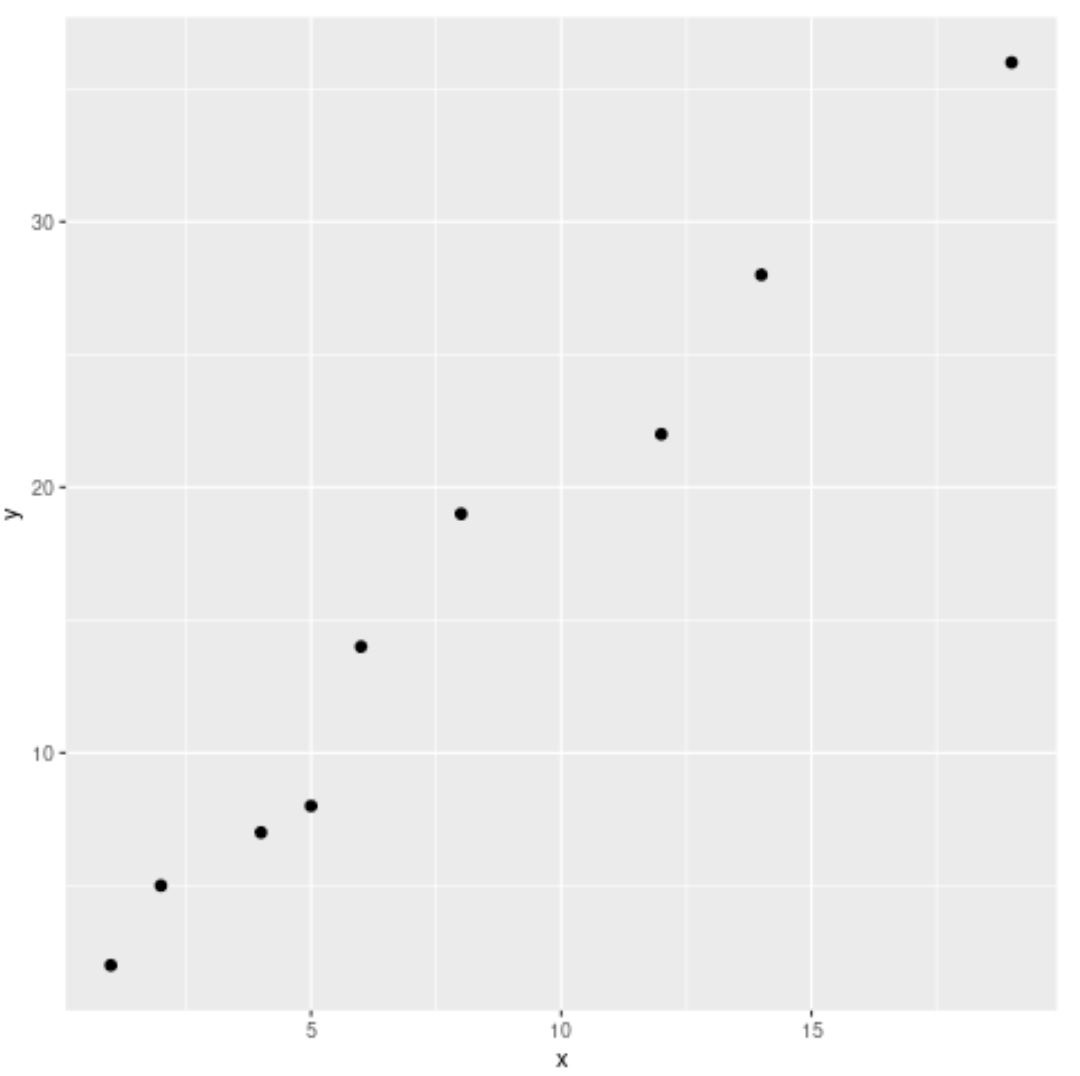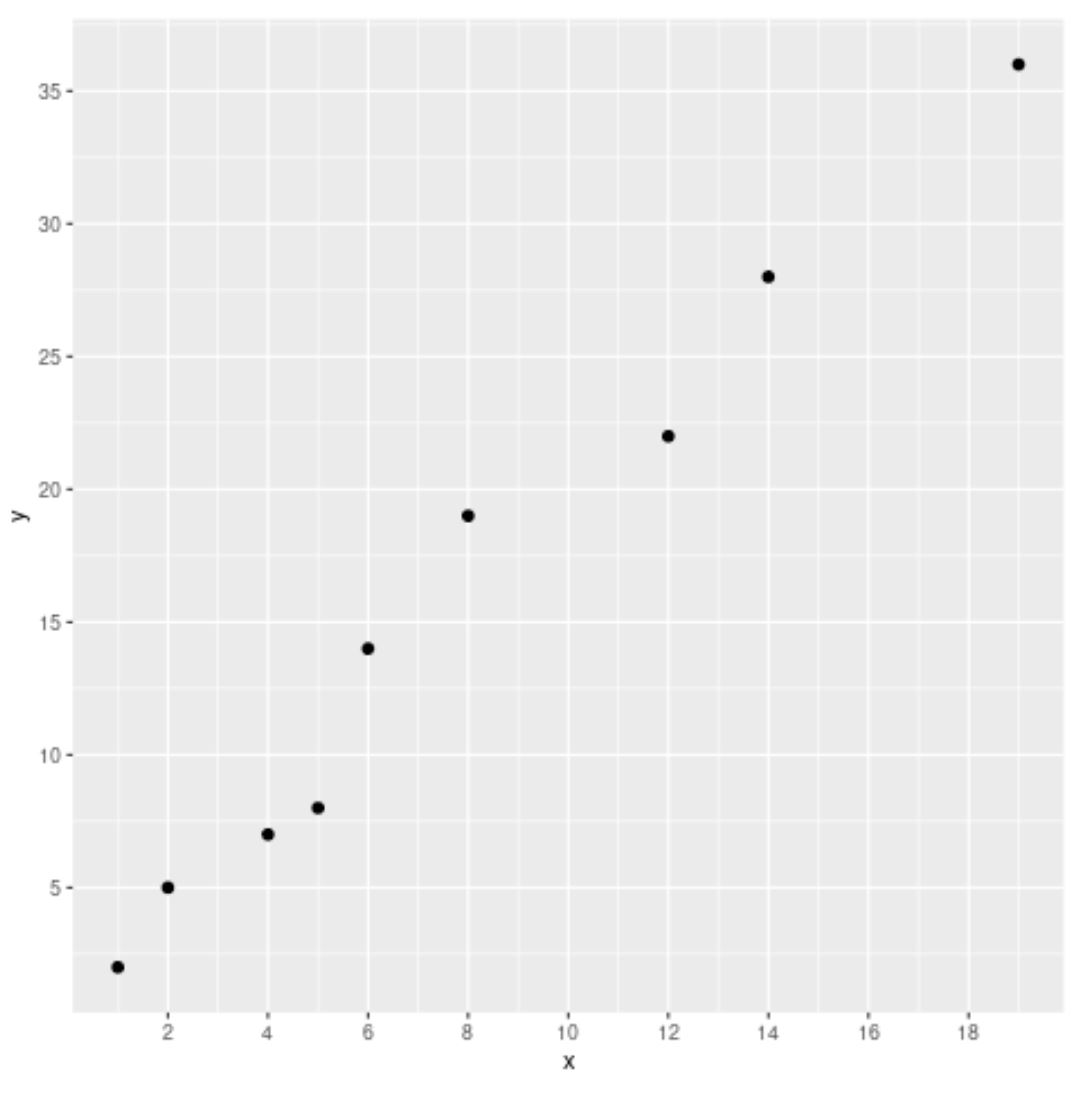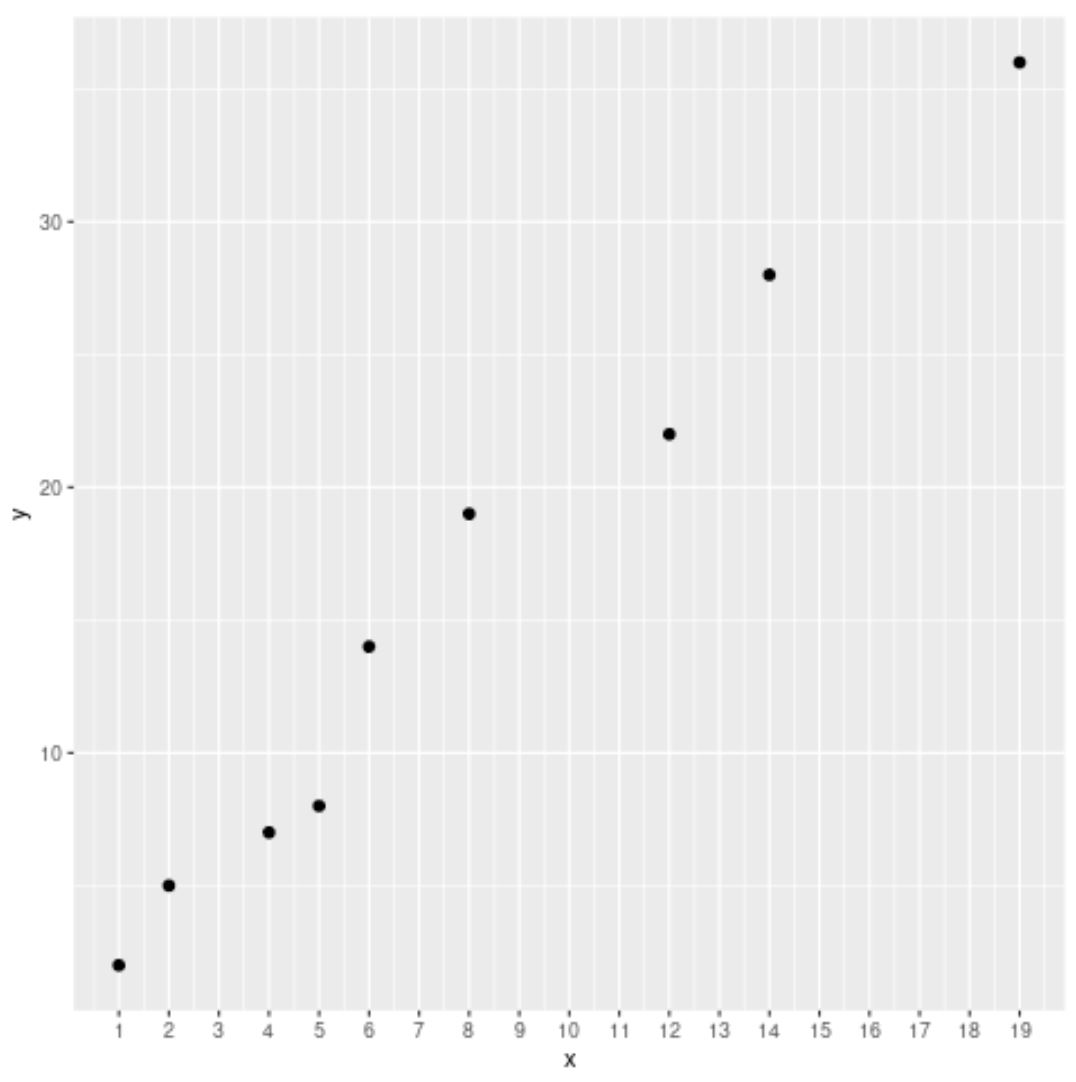Ggplot2 で軸のティック数を変更する方法 (例あり)
次の基本構文を使用して、ggplot2 のプロットの軸の目盛りの数を変更できます。
p+ scale_x_continuous(n. breaks = 10 ) + scale_y_continuous(n. breaks = 10 )
次の例は、この構文を実際に使用する方法を示しています。
例: ggplot2 の軸のティック数を変更する
R に次のデータ フレームがあるとします。
#create data frame
df <- data. frame (x=c(1, 2, 4, 5, 6, 8, 12, 14, 19),
y=c(2, 5, 7, 8, 14, 19, 22, 28, 36))
#view data frame
df
xy
1 1 2
2 2 5
3 4 7
4 5 8
5 6 14
6 8 19
7 12 22
8 14 28
9 19 36
散布図を作成すると、ggplot2 は x 軸と y 軸に適切な数のティックを自動的に選択します。
library (ggplot2) #create scatterplot ggplot(df, aes(x=x, y=y)) + geom_point(size= 2 )

ただし、 n.breaks引数を使用して、両方の軸で使用する正確なティック数を指定できます。
library (ggplot2) #create scatter plot with custom number of ticks ggplot(df, aes(x=x, y=y)) + geom_point(size= 2 ) + scale_x_continuous(n. breaks = 10 ) + scale_y_continuous(n. breaks = 10 )

両方の軸のティック数が増加していることに注意してください。
必要に応じて、単一軸のティック数を変更できることにも注意してください。
library (ggplot2) #create scatter plot with custom number of ticks on x-axis only ggplot(df, aes(x=x, y=y)) + geom_point(size= 2 ) + scale_x_continuous(n. breaks = 20 )

この例では、ggplot2 は y 軸で使用するティック数を選択しますが、x 軸のティック数はn.breaks引数の数値によって決まります。
追加リソース
次のチュートリアルでは、ggplot2 で他の一般的なタスクを実行する方法を説明します。
ggplot2 で軸ラベルを回転する方法
ggplot2で軸ブレークを設定する方法
ggplot2 で軸の制限を設定する方法
ggplot2で凡例ラベルを変更する方法